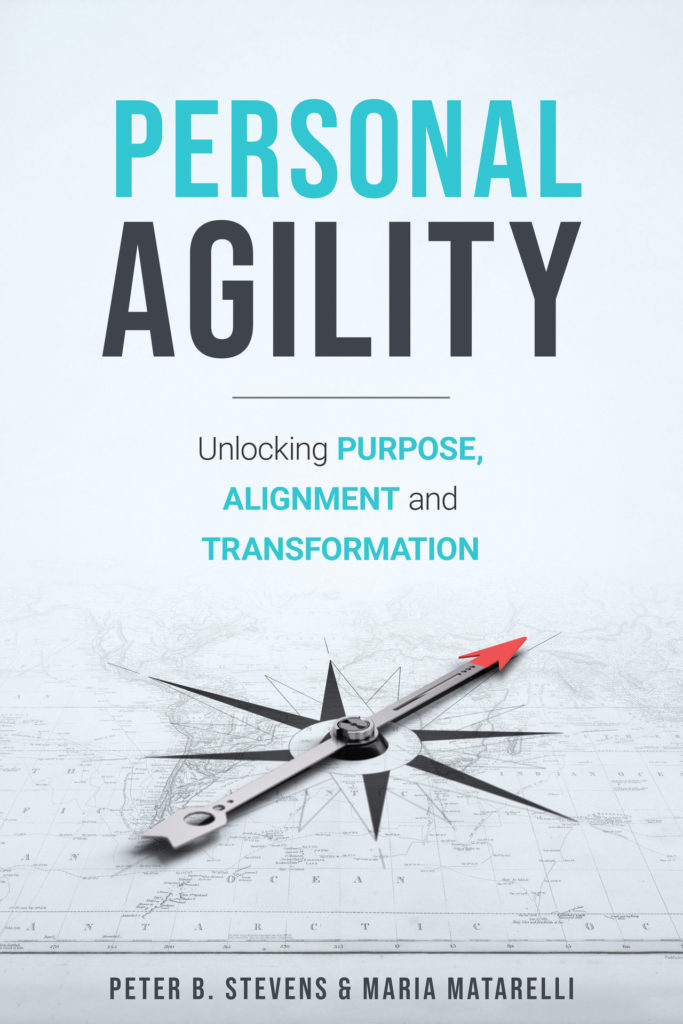Many knowledge workers spend more time in meetings than they would like. This is often literally counter-productive, not to mention a source of frustration. However, simple solutions rarely work. The Personal Agility System offers a broad approach that can improve the situation.
What happens if all meetings are cancelled for a week? Productivity increases and communication shifts to asynchronous channels, as demonstrated by Get Stuff Done week at automation service provider Zapier. Microsoft Japan achieved a similar result in an experiment run even before the coronavirus pandemic: for one month, employees only worked four days a week, and meetings were allowed to last no more than 30 minutes. Productivity increased 40%, as measured against previously defined targets.
These examples show that fewer meetings are feasible. But how can people overloaded with meetings get to that point? More is required than just a few tips on making meetings shorter and more efficient. Fundamental changes are needed in the organisation of day-to-day work. Peter Stevens, an experienced scrum coach and developer of the Personal Agility System (see box), advises people who want to make changes to their private or business lives. And he is familiar with the problem from his own work: ‘I have clients who spend two-thirds of their work week in meetings and one-third responding to e-mails,’ he says. ‘But they still have to get their work done on the side.’ Overtime, stress and dissatisfaction are the logical consequence.
Meetings and their multitasking problem
Some meetings are inefficient and of little use. ‘Many companies could use 20% of their meeting time for productive work by eliminating such meetings,’ observes Peter Stevens. This would benefit managers in particular, who would have more time for productive – and satisfying – tasks.
But even useful meetings can have negative multitasking effects. Like any other disruption, meetings interrupt our flow by forcing us to deal with a completely different topic. A meeting may be followed by another topic, then another meeting, etc. Most of us are familiar with the consequences: after a morning full of meetings and topic switching, we’re already exhausted by midday but still feel like we haven’t achieved anything.

‘Reducing the number of meetings often requires a change in corporate culture.’
Peter Stevens
We are constantly hopping from one topic to the next and reorientating our thoughts, a process that takes time and energy. Juggling different topics at the same time – in other words, multitasking or task switching – significantly reduces our productivity. Not to mention our job satisfaction. This has been shown by various studies and the case is set out clearly by the American Psychological Association.
One logical approach is to block time in your calendar for when you are at your most productive. This frees you up to focus, to perform ‘deep work’. But this brings us to the real hurdle standing in the way of fewer meetings and greater productivity. Our time is often claimed by others. Top-down events can override our daily scheduling. Meetings with multiple participants with equally full agendas require us to adapt. And the more appointments in our calendar, the harder it becomes to block time.
Improve meeting culture with the Personal Agility System
Agile project management methods can help in this situation. Peter Stevens calls his approach to achieving greater job satisfaction and personal satisfaction in general the ‘Personal Agility System’. He shows with this how agile methods – such as small steps and reflecting on accomplishments – can help to achieve a goal. Because this is the first step. If you’re suffering from meeting overload, you ostensibly want fewer meetings. But perhaps this should be framed as: ‘I’d rather invest my time in developing my product than in meetings.’ This allows us to formulate a specific objective, for example: ‘I want to invest 40% of my working time in product development.’
Such changes also benefit employers, as Peter Stevens has often learnt during his consultations: ‘A satisfied person is more motivated at work and therefore more productive.’ In other words, they are more likely to achieve their goals.
Our previous week’s calendar serves as a compass on our way to this goal. Analysing the topics covered in meetings shows whether we are heading where we want to be going or need to make a course correction, which might mean replacing a meeting with another form of communication.
Personal Agility System (PAS)

The model developed by Peter Stevens is based on the observation that time is our most valuable commodity and should therefore be spent on activities that are important to us. The aim is to find more satisfaction and purpose in life or work. The Personal Agility System offers guidelines and tools that can help us achieve this. The focus is on dialogue, including self-reflection. PAS uses methods from agile frameworks such as Scrum. Despite its name, the approach is also suitable for companies and departments that are struggling to achieve their goals.
Further information can be found on the website of the Personal Agility Institute and in the recently published book Personal Agility: Unlocking Purpose, Alignment, and Transformation. This provides a clear description of the system using many case studies from personal and business life and serves as an introduction.
When others can block time in our calendar, we require everyone’s buy-in for such change. Companies that already work flexibly and use digital communication tools such as Microsoft Teams have an advantage here, as they are more used to communicating information and tasks via these. Peter Stevens is also aware of this: ‘Reducing the number of meetings often requires a change in corporate culture.’
Such a culture includes making appropriate use of the available communication channels. Some meetings could be replaced by an asynchronous (non-simultaneous) discussion in a chat channel, taking the example of Zapier’s Get Stuff Done week. Or information might be exchanged via e-mail, intranet or group chat. What matters is that everyone involved has the opportunity to get comfortable with such forms of communication.
First steps to fewer meetings
Most people find it easier to tackle change in small steps. This also applies to changes in corporate culture or at least meeting culture. You can take your first steps where you have influence, possibly together as a team. And this is also the part of the journey where tips on productive meetings can be helpful.
Tips for fewer or shorter meetings
- Shorten meeting times, for example from 60 minutes to 45 minutes.
- Replace a meeting with asynchronous communication via your chat channel or information via e-mail.
- Have meetings start at even or odd hours only so that there is a bit of time between them.
- Use the buffer time feature in Outlook to ensure you always have at least five minutes between meetings.
- Set office hours: define times in your calendar when you can be reached for a quick chat. This works best if practised by an entire team or department.
- Designate meeting-free days: schedule one to two days – in your team or company – on which no (internal) meetings will take place (or attendance is optional). If this is an unrealistic target, start with half days.
- Question recurring meetings: check whether you really need to take part in regular meetings. If you don’t, opt out.
- Invite only the necessary people: limit the participants to a few important individuals who can contribute to the meeting objective. If necessary, other employees can be invited in Outlook as optional attendees – who are allowed to cancel.
Support for modern working
Would you like to improve productivity in your company and make it a more attractive workplace for employees? Modern forms of digital collaboration can support this. Swisscom’s Future Work Consulting is here to help you tackle cultural change in a targeted and strategic way.



